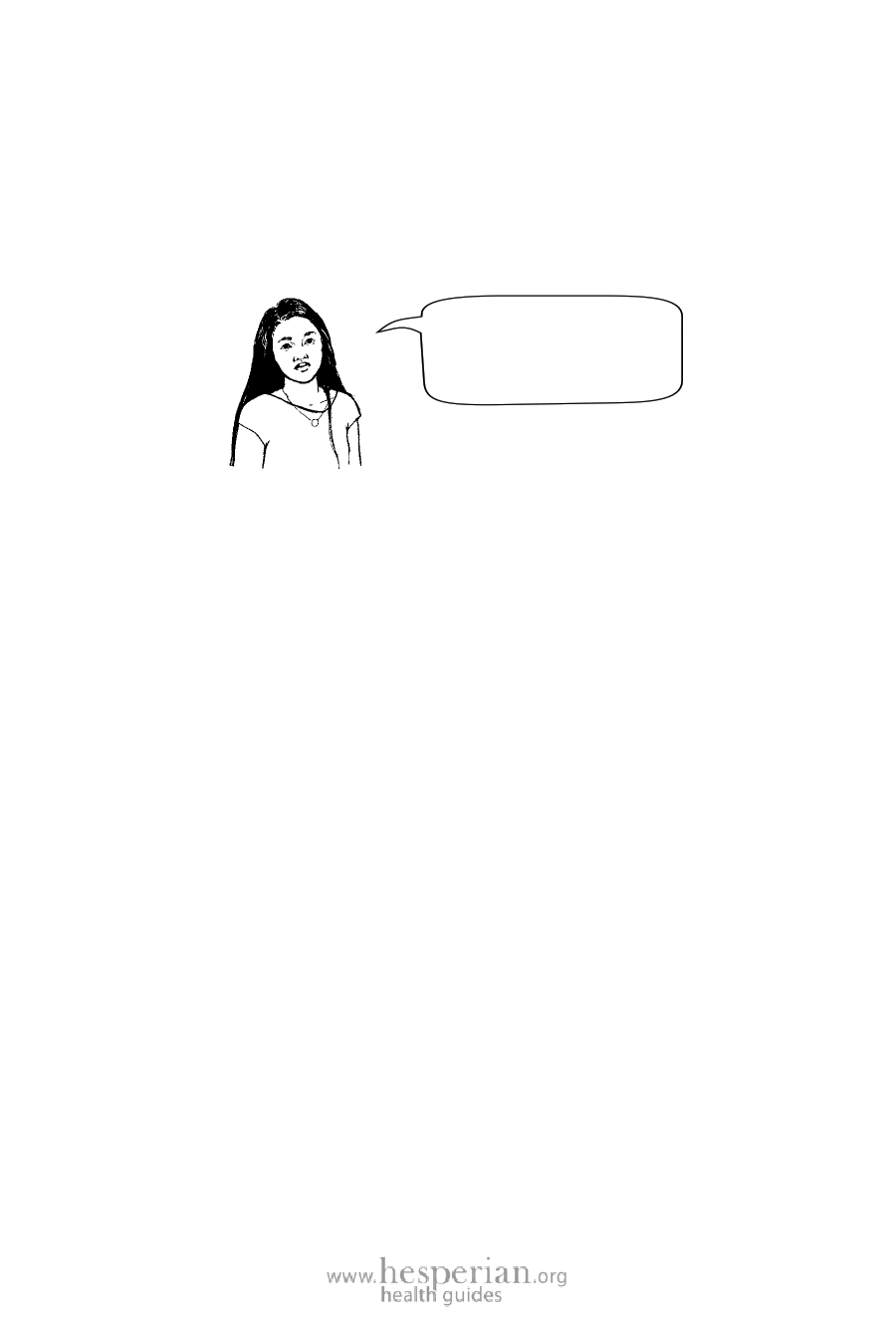
Where There Is No Dentist 2012 183
Dental care For a Person with HIV
In general, there is no need to change dental treatment because a person
is infected with HIV. This is especially true if the person has no signs of
HIV. If there is already an infection in the mouth, use a mouth wash before
treatment (see the “General Treatment” box on pages 184 and 185). This
will help prevent the infection from getting worse.
Anyone with HIV has the
right to get good dental
care and to be treated
with respect.
There are no special problems in doing simple fillings, or fitting false teeth
(dentures) for a person infected with HIV. But as the HIV infection advances
to AIDS, you will be able to give better dental care if you know about any
health problems the person may have. For example, if you need to take
out a tooth, you must be extra careful not to cause an infection (see page
pages 85 to 90). Remember, always use clean, sterilized instruments, and
when you give injections use only clean, sterilized needles and syringes, or
disposables, so you do not cause infections. If you have any concerns about
someone’s health, it may help to speak with a health worker.
Taking out a Tooth
To take out a tooth, follow all the guidelines in Chapter 11, page 163. In
addition, to prevent infection for someone with HIV, before you remove the
tooth, make sure the person’s mouth is as clean as possible. A mouth rinse
can help (see the “General Treatment” box on pages 184 and 185).
To prevent infection and to help with healing, gently scale or scrape away
the tartar (see Chapter 8) from all the teeth. Be careful to do as little damage
as possible to the gum and bone around the tooth you are taking out. An
infected tooth socket (the hole that is left after you take out the tooth) in a
person with HIV can be a serious problem. For problems after you take out a
tooth, see pages 171 to 173.
In the later stages of HIV infection when the person has AIDS, the blood
may not clot as quickly as normal. Be very gentle when you take out the
teeth. Take only one tooth out at a time, and wait until bleeding is controlled
before taking another one out.